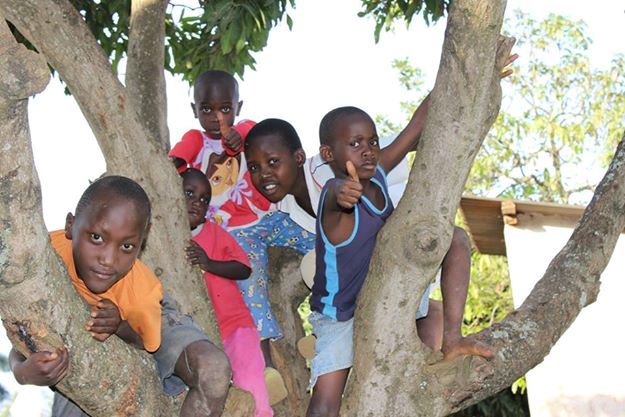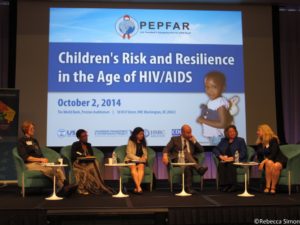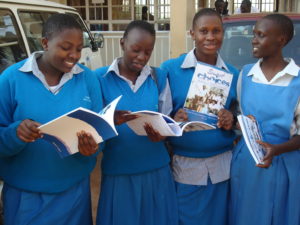Policy
Giving Thanks for You
 You are always the focus of the Children’s AIDS Fund International’s (CAFI) gratitude. Your compassion for HIV impacted children and families. Your concern about and willingness to help people you will never meet. Your sacrifice to change lives for the better.
You are always the focus of the Children’s AIDS Fund International’s (CAFI) gratitude. Your compassion for HIV impacted children and families. Your concern about and willingness to help people you will never meet. Your sacrifice to change lives for the better.
This message of gratitude and hope from the clients of the Family Hope Centre in Kampala, Uganda says it all:
Thank you for your efforts.
You are friends indeed with happiness
And joy we will live to tell.
We were sitting beside our graves
We had lost hope to live,
You came and stood by us,
You gave us courage to live,
We can smile, chat and dance
Because of efforts you made
We have testimonies to tell
Long live dear friends.
In this Thanksgiving season we join our friends in Uganda to Thank You for the difference you have made in thousands of children’s and families’ lives.
And we pray that in giving you have also been blessed.
Understanding HIV impacted Children’s Risk and Resilience
 How will HIV/AIDS impact children over the long run and what can we do about it? The question was posed to 14 global experts on children, HIV/AIDS and child development by the President’s Emergency Plan for AIDS Relief (PEPFAR) and the US Agency for International Development (USAID).
How will HIV/AIDS impact children over the long run and what can we do about it? The question was posed to 14 global experts on children, HIV/AIDS and child development by the President’s Emergency Plan for AIDS Relief (PEPFAR) and the US Agency for International Development (USAID).
A three-phase study was conducted to find the answer. Phase 1 examined documented evidence of impact: health, psychological and social effects of adult HIV on children. Phase 2 examined child development literature to better understand long-term outcomes for HIV impacted children. Phase 3 developed a model to begin to help predict long-term consequences for the millions of HIV/AIDS impacted children worldwide.
All children–especially the very young–rely on adults for protection, care, developmental stimulation, nutrition and healthcare access. HIV/AIDS is most prevalent among adults in their reproductive years, resulting in far-reaching implications for children.
Adult HIV taxes the standard of care parents are able to provide for their children, especially when HIV/AIDS is coupled with poverty.
The result of this effort allows us to better understand the current state of children in the epidemic as well as to better predict the future for them and their families.
Phase 1: Risk and HIV Impacted Children. Through PEPFAR much has been learned about the implications of adult HIV for children. While risk does not necessarily lead to harm, many studies indicate it often does. Specific risk areas identified: psychological adjustment, cognitive development, nutrition, education outcomes, exposure to violence, and sexual health.
Phase 2: Long-term Outcomes of Childhood Adversity Addressed in Child Development Literature. Extensive child development evidence was used to better understand short- and long-term implications of HIV/AIDS for children, how to best protect them from harm and to mitigate harm should it occur. Specific harms identified: disruption of the parent-child relationship, parental death, parental mental health, attachment and institutional care, violence against children, growth and development.
Phase 3: Modeling the Impact of Adult HIV on Impacted Children. Based on a single cohort of women and children in South Africa the model looked at outcomes for children based on their mothers’ state of health (uninfected, HIV+ but asymptomatic, symptomatic, on treatment or deceased). Findings indicate key areas which can inform current interventions and future policy to more effectively address HIV-impacted child outcomes.
“This comprehensive research provides critical insights and measures for everyone working with HIV impacted children,” said Anita Smith, CAFI president. “Clearly a focus on family-centered care, support and interventions is critical while more long-term research continues.”
All session presentations are available for viewing at www.OVCsupport.net.
HIV Prevention Debates Continue
 With the dramatic increase in the number of patients on HIV treatment over the past decade and the recent still controversial emergence of pre-exposure prophylaxis (PrEP) programs, more and more experts assert it is possible to treat our way out of the HIV epidemic. Clearly increasing data supports that position because HIV positive individuals on treatment are much less infectious and, thus, less likely to transmit HIV to an uninfected partner.
With the dramatic increase in the number of patients on HIV treatment over the past decade and the recent still controversial emergence of pre-exposure prophylaxis (PrEP) programs, more and more experts assert it is possible to treat our way out of the HIV epidemic. Clearly increasing data supports that position because HIV positive individuals on treatment are much less infectious and, thus, less likely to transmit HIV to an uninfected partner.
The widespread implementation of this approach has led in some places to a decreased emphasis of more traditional prevention messages such as delaying sexual debut and limiting the number of sexual partners one has.
Today fewer youth are hearing messages of risk avoidance and increasingly think, “if I get infected I’ll just take a pill.”
This would be a truly unfortunate outcome, especially in countries like Zambia where 50% of its population is under age 15, and Uganda with the world’s youngest population with more than 78% under age 30, if fundamental prevention messaging were lost.
An article by Edward Green and Allison Ruark in National Review Online based on data from South Africa provides an interesting perspective on this very important discussion.
CAF believes it important that all perspectives in this discussion be heard and is posting this article for that purpose. To effectively end HIV/AIDS and bring about the dawn of an HIV-Free Generation let us actively use all the tools available simultaneously rather than abandoning any on the battlefield that is already strewn with far too many casualties.


